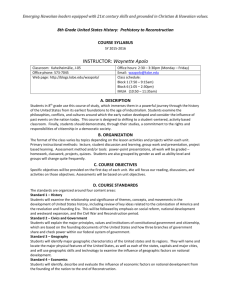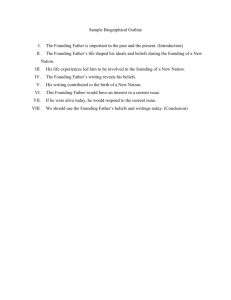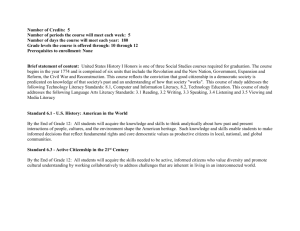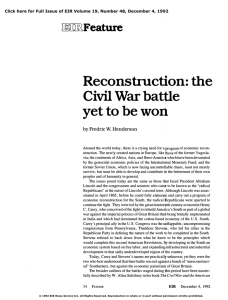TextSplash.ReconstructionUnfinished
advertisement
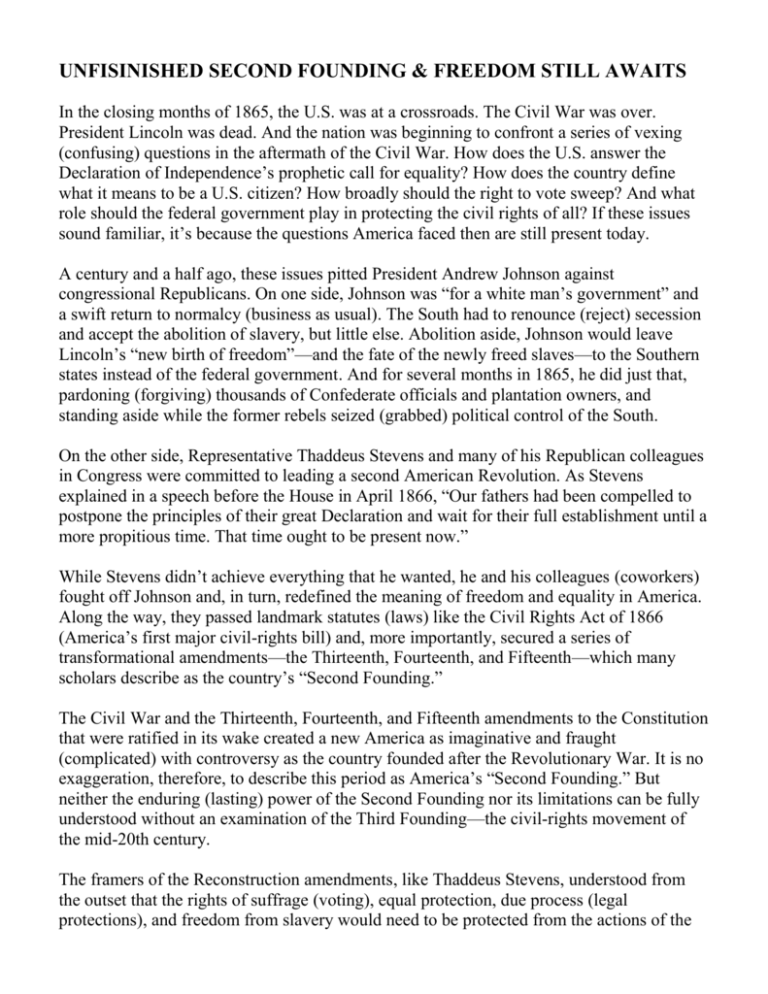
UNFISINISHED SECOND FOUNDING & FREEDOM STILL AWAITS In the closing months of 1865, the U.S. was at a crossroads. The Civil War was over. President Lincoln was dead. And the nation was beginning to confront a series of vexing (confusing) questions in the aftermath of the Civil War. How does the U.S. answer the Declaration of Independence’s prophetic call for equality? How does the country define what it means to be a U.S. citizen? How broadly should the right to vote sweep? And what role should the federal government play in protecting the civil rights of all? If these issues sound familiar, it’s because the questions America faced then are still present today. A century and a half ago, these issues pitted President Andrew Johnson against congressional Republicans. On one side, Johnson was “for a white man’s government” and a swift return to normalcy (business as usual). The South had to renounce (reject) secession and accept the abolition of slavery, but little else. Abolition aside, Johnson would leave Lincoln’s “new birth of freedom”—and the fate of the newly freed slaves—to the Southern states instead of the federal government. And for several months in 1865, he did just that, pardoning (forgiving) thousands of Confederate officials and plantation owners, and standing aside while the former rebels seized (grabbed) political control of the South. On the other side, Representative Thaddeus Stevens and many of his Republican colleagues in Congress were committed to leading a second American Revolution. As Stevens explained in a speech before the House in April 1866, “Our fathers had been compelled to postpone the principles of their great Declaration and wait for their full establishment until a more propitious time. That time ought to be present now.” While Stevens didn’t achieve everything that he wanted, he and his colleagues (coworkers) fought off Johnson and, in turn, redefined the meaning of freedom and equality in America. Along the way, they passed landmark statutes (laws) like the Civil Rights Act of 1866 (America’s first major civil-rights bill) and, more importantly, secured a series of transformational amendments—the Thirteenth, Fourteenth, and Fifteenth—which many scholars describe as the country’s “Second Founding.” The Civil War and the Thirteenth, Fourteenth, and Fifteenth amendments to the Constitution that were ratified in its wake created a new America as imaginative and fraught (complicated) with controversy as the country founded after the Revolutionary War. It is no exaggeration, therefore, to describe this period as America’s “Second Founding.” But neither the enduring (lasting) power of the Second Founding nor its limitations can be fully understood without an examination of the Third Founding—the civil-rights movement of the mid-20th century. The framers of the Reconstruction amendments, like Thaddeus Stevens, understood from the outset that the rights of suffrage (voting), equal protection, due process (legal protections), and freedom from slavery would need to be protected from the actions of the states and enforced by the federal government. This is, in no small measure, the essence of the Second Founding—a fundamental reordering of the relationship between the states and federal government. “States’ rights” were to be tempered and cabined (limited and corralled) where they undermined black citizenship. To protect black citizenship, the Reconstruction Amendments opened a new front in the unfinished battles of the Civil War. The federal courts would do the hard work of securing the victory for newly freed slaves. As the historian Eric Foner notes in his seminal treatment of the Reconstruction period, the protections of the Civil War amendments “placed an unprecedented (never before seen)—and unrealistic—burden of enforcement on the federal courts.” The Supreme Court showed itself to be both unprepared and unwilling to take up the full measure of that responsibility. Indeed, with the Supreme Court’s devastating 1876 decision in U.S. v. Cruikshank (the Court overturned the conviction of three white men who participated in the massacre of 300 blacks protecting the federal courthouse in Louisiana), the widespread white-supremacist violence in the South and the removal of federal troops from Louisiana and Mississippi are among the leading factors that ended Reconstruction. A decade later (1870s), when in the Civil Rights Cases the Supreme Court exhibited what the scholar Darren Hutchinson calls “racial exhaustion,” it was clear that it was simply not up to the enforcement power called for by the Reconstruction Amendments. Just 20 years after the end of slavery and during a period of intense white-supremacist violence, the court declared in the Civil Rights Cases that there must be a time when former slaves “cease to be the special favorite of the laws” and instead “take the rank of mere citizens.” From the Atlantic articles entitled, The Unfinished Second Founding & Freedom Still Awaits BIG PICTURE: How did the federal government create a style of Reconstruction that was impossible to sustain? Who was Thaddeus Stevens and how did he participate in Reconstruction? How would you describe the Second Founding? Describe how ‘racial exhaustion’ doomed Reconstruction.
